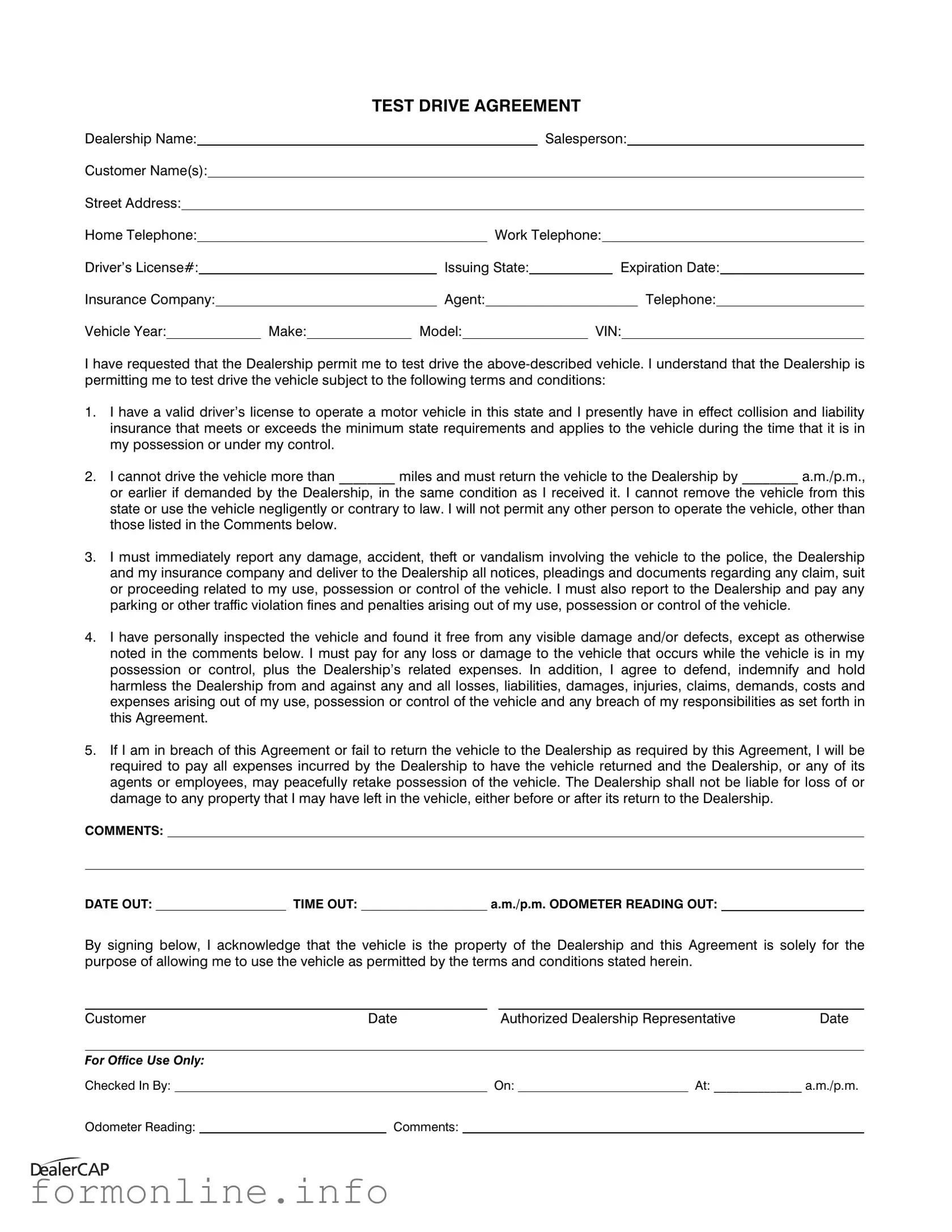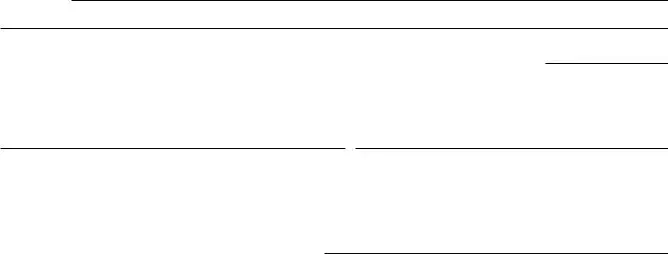The Rental Agreement is a document that outlines the terms and conditions under which a person can rent a vehicle. Similar to the Test Drive Agreement, it requires the renter to have a valid driver’s license and insurance coverage. Both documents emphasize the importance of returning the vehicle in the same condition it was received. They also hold the user responsible for any damage or accidents that may occur during the rental period, ensuring accountability for the vehicle's care and use.
The Vehicle Purchase Agreement serves as a formal contract between a buyer and a seller in a vehicle transaction. Like the Test Drive Agreement, it includes essential details about the vehicle, such as the make, model, and VIN. Both documents require the buyer to acknowledge the condition of the vehicle and agree to certain terms regarding payment and delivery. The Purchase Agreement also outlines the responsibilities of the buyer, similar to how the Test Drive Agreement details the responsibilities of the person test driving the vehicle.
The Lease Agreement for a vehicle is another document that shares similarities with the Test Drive form. In both cases, the user must agree to specific terms regarding the use of the vehicle. The Lease Agreement typically outlines the duration of the lease, mileage limits, and maintenance responsibilities. Just like the Test Drive Agreement, it holds the lessee accountable for any damages or issues that arise while the vehicle is in their possession, ensuring a clear understanding of responsibilities.
The Insurance Policy Document is crucial for both test driving and vehicle ownership. It requires the individual to maintain adequate insurance coverage that meets state requirements, as stated in the Test Drive Agreement. Both documents emphasize the importance of reporting accidents or damages to the insurance company and the dealership. This shared focus on insurance ensures that the individual is protected and that the dealership is safeguarded against potential liabilities.
The Waiver of Liability form is often used in conjunction with test drives and other vehicle-related activities. It serves to protect the dealership from claims arising from accidents or injuries that may occur during the test drive. Similar to the indemnity clause in the Test Drive Agreement, the Waiver of Liability emphasizes the individual's acceptance of risks associated with using the vehicle. Both documents aim to clarify the responsibilities of the user and protect the dealership from unforeseen circumstances.
The Maintenance Record is a document that tracks the service history of a vehicle. While it may seem different at first glance, it shares a connection with the Test Drive Agreement through the emphasis on the vehicle's condition. Both documents require the user to acknowledge the state of the vehicle and any visible damage before use. This record helps ensure that the vehicle is well-maintained and safe for operation, just as the Test Drive Agreement seeks to confirm the vehicle's condition before allowing a test drive.
The Bill of Sale is a document that finalizes the transfer of ownership of a vehicle. It includes similar information about the vehicle and the parties involved, just like the Test Drive Agreement. Both documents require signatures from the buyer and seller, indicating mutual agreement to the terms outlined. The Bill of Sale also serves as a legal record of the transaction, which can be essential for both parties in case of disputes or future claims.
The Consent Form for Minors is relevant when a minor wishes to test drive a vehicle. This document, like the Test Drive Agreement, outlines the responsibilities and liabilities associated with operating a vehicle. It requires parental or guardian consent, ensuring that the minor understands the rules and regulations governing the test drive. Both forms aim to protect the interests of the dealership while ensuring that the individual is aware of their obligations.
Understanding the various legal documents involved in vehicle transactions is essential for both buyers and sellers. Among these, the Mobile Home Bill of Sale serves a crucial role in conveying ownership and outlining the terms of sale, much like agreements that specify vehicle usage and responsibilities. Clarity in these documents not only ensures a smooth transaction but also protects the interests of all parties involved.
The Vehicle History Report is a document that provides insights into the past of a vehicle, including any accidents or damage. While it does not directly govern the terms of a test drive, it complements the Test Drive Agreement by offering transparency about the vehicle’s condition. Both documents encourage individuals to be informed about the vehicle before taking it for a test drive, promoting responsible use and decision-making based on the vehicle's history.

